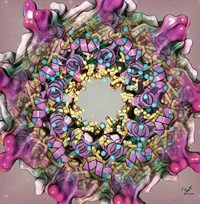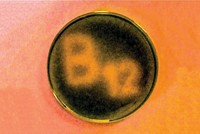Advertisement
Grab your lab coat. Let's get started
Welcome!
Welcome!
Create an account below to get 6 C&EN articles per month, receive newsletters and more - all free.
It seems this is your first time logging in online. Please enter the following information to continue.
As an ACS member you automatically get access to this site. All we need is few more details to create your reading experience.
Not you? Sign in with a different account.
Not you? Sign in with a different account.
ERROR 1
ERROR 1
ERROR 2
ERROR 2
ERROR 2
ERROR 2
ERROR 2
Password and Confirm password must match.
If you have an ACS member number, please enter it here so we can link this account to your membership. (optional)
ERROR 2
ACS values your privacy. By submitting your information, you are gaining access to C&EN and subscribing to our weekly newsletter. We use the information you provide to make your reading experience better, and we will never sell your data to third party members.
Synthesis
When Plants Get Too Much Sun
Plants rely on a carotenoid to protect themselves from overexposure to light
by Amanda Yarnell
January 24, 2005
| A version of this story appeared in
Volume 83, Issue 4
PHOTOSYNTHESIS
The molecule that plants use to protect themselves from the dangers of getting too much sun during photosynthesis has now been revealed by a combination of ultrafast spectroscopy and plant genetics.
Plants rely on sunlight to generate chemical energy via photosynthesis. It's been known for more than two decades that plants protect themselves from excess light, which can lead to oxidative damage to chlorophyll and other key photosynthetic pigments. But the biophysical mechanism of this protective process--known as feedback de-excitation--has remained mysterious.
Chemist Graham R. Fleming, plant biologist Krishna K. Niyogi, and coworkers at Lawrence Berkeley National Laboratory and the University of California, Berkeley, have now shown that zeaxanthin, a carotenoid known to be produced by plants in response to bright sunlight, is responsible for the protective effect [Science, 307, 433 (2005)].
Using femtosecond spectroscopic techniques and plant genetics, the team shows that exposing spinach leaves to intense light triggers the formation of zeaxanthin cation radicals. These cation radicals form when zeaxanthin binds to potentially dangerous photoexcited chlorophyll molecules. The zeaxanthin gives up an electron to the excited chlorophyll, yielding a chlorophyll anion radical and a zeaxanthin cation radical. These products subsequently undergo charge recombination, allowing the excited-state energy of chlorophyll to be safely dissipated as heat.
The study is "a major advance in understanding how feedback de-excitation works at the molecular level," comments Robert E. Blankenship of Arizona State University. It "points the way to studies in which this mechanism might be manipulated for practical uses," he adds, such as protecting artificial photosynthetic systems used for solar energy generation from light-induced damage.






Join the conversation
Contact the reporter
Submit a Letter to the Editor for publication
Engage with us on Twitter